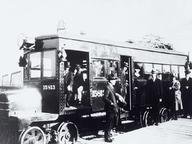
Remembering the 1920s Trivia Quiz
The 1920s was known as the Roaring Twenties and also The Jazz Age. Sort the items into their correct categories. At the end, you will see the names of the categories and how many you correctly placed.
by Ilona_Ritter.
Estimated time: 3 mins.